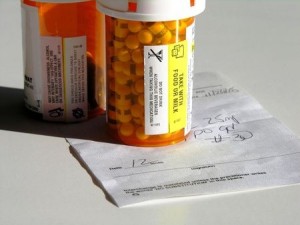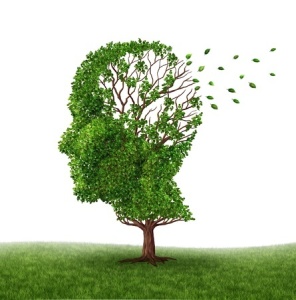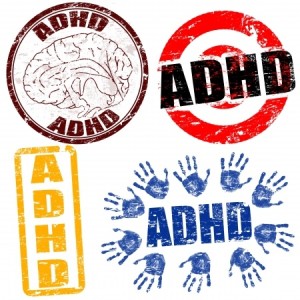A Censored Story of Psychiatry, Part 2

I was taken aback by Lieberman’s tone in describing Rosenhan as scornfully observing that no staff raised an issue of the apparent sanity of the pseudopatients in his famous study: “Being Sane in Insane Places.” Lieberman then said Rosenhan “saw another opportunity to inflict damage on psychiatry’s crumbling credibility.” Actually, a research and teaching hospital had been vocally saying that they doubted that such an error could occur in their hospital. So Rosenhan approached them and proposed that over a three month time period (not a year, as Lieberman claimed in what he indicated was a direct quote), “one or more pseudopatients would attempt to be admitted into the psychiatric hospital.” Here is what Lieberman wrote concerning what Rosenhan did:
He approached a large prestigious teaching hospital that had been especially vocal in contesting Rosenhan’s finding with a new challenge: “Over the coming year, I will send in another round of imposters to your hospital. You try to detect them, knowing full well that they will be coming, and at the end of the year we will see how many you catch.”
Rosenhan reported that the hospital staff members rated each patient on the likelihood of being a pseudopatient. Judgments were obtained on 193 patients admitted for psychiatric treatment. All staff members that had contact with the patients were asked to make judgments. Forty-one admissions were judged with high confidence to be pseudopatients. “Twenty-three were considered suspect by at least one psychiatrist. Nineteen were suspected by one psychiatrist and one other staff member.” Rosenhan then said: “Actually, no genuine pseudopatient (at least from my group) presented himself during this period.” Rosenhan encapsulated the question raised by his study in the provocative opening sentence of his article: “If sanity and insanity exist, how shall we know them?”
Psychiatry was at a crucial time of its history in 1973. Rosenhan’s article was published in January of 1973. Lieberman reported that the Board of Trustees for the American Psychiatric Association (APA) called an emergency conference in February of 1973 “to consider how to address the crisis and counter the rampant criticism.” He said that the Board realized that the best way to counter the “tidal wave of reproof” was to produce a fundamental change in how mental illness was “conceptualized and diagnosed.” They authorized the creation of a third edition of the Diagnostic and Statistical Manual, the DSM.
The APA eventually appointed Robert Spitzer to chair the revision process of the DSM-III, which was a radical change in how psychiatric diagnosis was done and how mental illness was conceptualized. As Robert Whitaker and Lisa Cosgrove reported in Psychiatry Under the Influence, the DSM-III was an instant success. “In the first six months following its publication, the APA sold more copies of its new manual than it had previously sold of its two prior DSM editions combined.” The DSM was adopted by insurance companies, the courts, governmental agencies, colleges and universities. It structured discussion in psychology textbooks. It was required to do research in the U.S. and eventually abroad as well. “DSM III became psychiatry’s new ‘Bible’ throughout much of the world.” Lieberman claimed:
The DSM-III turned psychiatry away from the task of curing social ills and refocused it on the medical treatment of severe mental illnesses. Spitzer’s diagnostic criteria could be used with impressive reliability by any psychiatrist from Wichita to Walla Walla.
What’s missing from this triumphal rhetoric is the battle waged by Spitzer against Rosenhan’s study and its implications as he and others worked to revise psychiatric diagnosis—and its reliability problems. In the 1980 issue of the Journal of the American Academy of Child [& Adolescent] Psychiatry, Michael Rutter and David Shaffer, both academic psychiatrists, were critical of the published reports of reliability studies done of the DSM-III field trials. Referring to two 1979 published reports by Spitzer, they commented that while the studies were useful, “as pieces of research they leave much to be desired.”
Both reports concern the reliability study which involved clinicians “from Maine to Hawaii.” Unfortunately this impression of spread is largely spurious in that the reliability concerned agreements only between close colleagues (each clinician chose his own partner in the study). . . . Of course, we are acutely aware of the difficulties involved in such field studies and it may well be that this was the best that could be done within the time and resources available. However, the findings do little to provide a scientific basis for DSM-III.
Note how Rutter and Shaffer’s comments about: “clinicians from Maine to Hawaii” applies equally to Lieberman’s rhetoric on: “any psychiatrist from Wichita to Walla Walla.” Both Psychiatry Under the Influence and The Selling of DSM have more comprehensive critiques of the claimed success in conquering reliability and validity problems with psychiatric diagnosis. But Lieberman’s “uncensored history” of psychiatry in Shrinks is completely silent on this well documented dispute. Ironically, in the same issue of the Journal of the American Academy of Child Psychiatry, Spitzer and Cantwell described how the DSM-III was “considerably more inclusive and more comprehensive,” than its predecessor, the DSM-II.
In a disclaimer paragraph on the page before the Shrinks Table of Contents, Lieberman said that bucking the convention in academics of using ellipses or brackets in quotations, he avoided them. “So as to not interrupt the narrative flow of the story.” But he assured us that he made sure that any extra or missing words did not change the original meaning of the speaker or the writer. So he did not use an author-date reference system that included endnotes with references and page numbers for the quotes he cited. But he did say the sources of the quotes are all listed in the Sources and Additional Reading section. And if you wanted to see the original versions of the quotations, they were available at: www.jeffreyliebermanmd.com. When I checked the website at the end of July 2015, they were not available for download or viewing on any page.
As I think I’ve demonstrated, Dr. Lieberman made some very specific claims about David Rosenhan’s professional background and expertise that were false. His presentation of the famous Rosenhan study appeared to be distinctly biased and inaccurate in places. He presented as a quote of David Rosenhan something that he did not say in “Being Sane in Insane Places.” Was it a quote from another source, perhaps someone else claiming the quoted material as what Rosenhan said? We don’t know and cannot know because Lieberman didn’t use conventional citations in presenting his storyline for Shrinks. He was tellingly silent on issues such as questions about the reliability of DSM-III diagnoses from the time of its publication.
Because of these and other problems with his version of psychiatric history, I did not find that Shrinks was “the uncensored story of how we [psychiatry] overcame our dubious past.” If anything, its dubiousness seems to be continuing into the present. But you won’t hear about those issues in Shrinks.
If you are interested in alternative views of psychiatric history, ones with endnotes and footnotes, I suggest you read Mad in America or Anatomy of an Epidemic by Robert Whitaker; Psychiatry Under the Influence, by Robert Whitaker and Lisa Cosgrove; or The Mad Among Us by Gerald Grob. Chapter two of Psychiatry Under the Influence, “Psychiatry Adopts a Disease Model,” gives a significantly more nuanced survey of psychiatric diagnostic history than Shrinks. Whitaker and Cosgrove’s use of the idea of guild interests of psychiatry was very helpful to me in putting Shrinks into perspective.
Be forewarned that Whitaker is not one of Lieberman’s favorite people. In a radio interview promoting his new book Shrinks, Dr Lieberman said that Whitaker was a “menace to society because he’s basically fomenting misinformation and misunderstanding about mental illness and the nature of treatment.” Here is a link to where this was reported on Whitaker’s website, Mad in America. There is also a link there to the original radio interview. Look around at the other material on the site, including further responses by Whitaker and others on Dr. Lieberman’s remarks.









